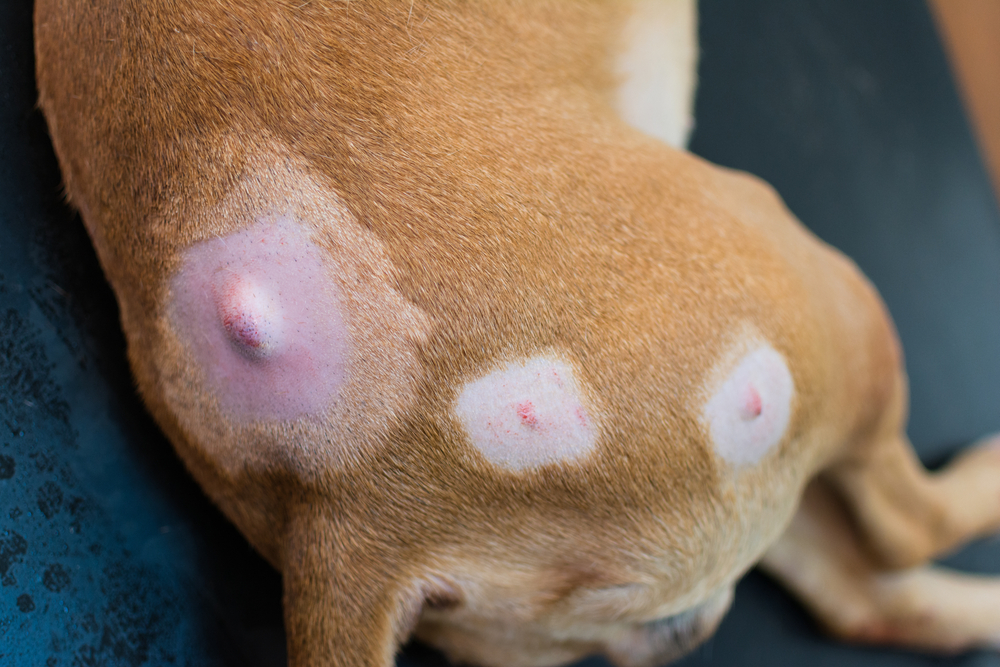Lumps on Dogs! Are They Cancer?

One of the more common medical questions we get at Oakland Veterinary Referral Services relates to bumps or lumps on dogs. Many dog owners fear the worst when they find this anomaly on or under their fur friend’s skin. Sometimes it appears suddenly or seemingly overnight.
Most of the time the lump is benign (which means it is noncancerous). There are several types of tumors, cysts, and abnormal skin growths that affect cats and dogs. This is why we want to give you an overview of skin lumps on for greater awareness and instruction, should you find one.
Types of Lumps on Dogs
Lipoma (fatty tumor) and other benign growths on dogs’ skin are generally nothing to worry about. In fact, lipomas account for 1.3 million benign tumor surgeries in the United States among canines. Along with these fatty tumors, other types of lumps on dogs include:
- Abscesses (infection, may look pimple-like)
- Granulomas (reaction to foreign substance)
- Skin tags (mole), warts, lipomas, and other noncancerous growths
- Cysts
- Malignant tumors (cancer)
The good news is that most of these growths are noncancerous, but should always be checked out by your veterinarian.
What Causes Skin Growths
There is no single cause of skin growths, but there are conditions that add additional risk for their likelihood of showing up on a pet. Depending on the type of skin abnormality, most senior or geriatric dogs (and sometimes cats) will develop one or more types of lumps. Other conditions that cause bumps and lumps on dogs include:
- Obesity
- Allergies
- Sun exposure
- Diet
- Cell overgrowth
- Clogged oil gland
- Injury from animal bite, insect bite, or skin wound
- Infection beneath the skin
- Foreign body (stick, grass awn)
- Virus (warts)
I Found a Lump on My Dog… Now What?
The important thing to do when you find a lump is to remain calm and make note of when it first appeared, its color and size, whether it is movable, or whether it is immobile or feels “squishy” (as with fluid-filled lumps). To help you assess the bump, trim the surrounding fur. We also advise you to take a photo or two of the lump, so you can document any future changes.
Once you make your notes, call your veterinarian to schedule an appointment for an examination. They may be able to determine the type of skin growth and how to proceed with treatment. If not, they will refer you to OVRS or another oncology team. Some growths can be removed surgically, and we may recommend fine needle aspiration or biopsy to ensure it isn’t a malignancy.
We know that these growths may cause alarm, but we assure you not to panic. Many times, the diagnosis is simple and easy to treat. For more information on bumps and lumps on dogs, please do not hesitate to call us at (248)-334-6877.


